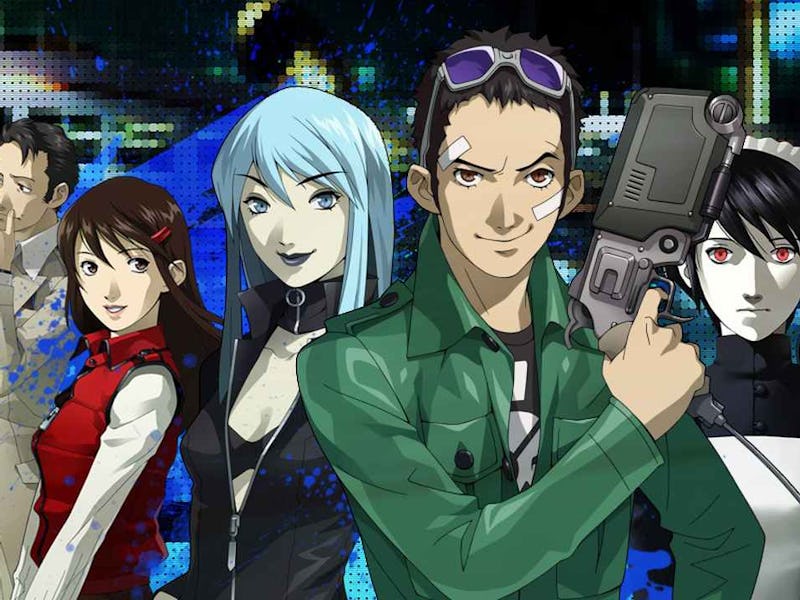25 years later, Soul Hackers 1 is still one of the best cyberpunk games ever made
Enter the Matrix.

Imagine a world where a handful of large tech companies control everything. These giants push virtual reality and offer the chance to live life in the real and virtual world. They say their products are life-changing, that they will make everything easier, but it feels like they are sucking the soul out of you. I know, a bit far-fetched.
This is the world of Devil Summoner: Soul Hackers, a 25-year-old game that has mostly been forgotten. But with a stylish sequel releasing on August 26, the original Soul Hackers stands the test of time remarkably well thanks to its challenging gameplay and all-too prescient cyberpunk plot.
Ghost in the shell
Soul Hackers blends cyberpunk, mysticism, and demons for a truly unique experience.
Soul Hackers’ full title is a mouthful — Shin Megami Tensei: Devil Summoner: Soul Hackers. Released in 1997 in Japan for Sega Saturn and globally in 2013 for the Nintendo 3DS, Soul Hackers is a sequel to a spinoff of Atlus’s hit Shin Megami Tensei series of RPGs, which also spawned the Persona franchise.
SMT, Persona, and the Devil Summoner series all share similar gameplay elements with slight variations depending on the title. SMT typically has a darker and more apocalyptic theme, while Persona focuses on the social aspects that come with the high school setting. The defining aspect of Devil Summoner: Soul Hackers is the use of cyberpunk aesthetics and plots.
Taking place in the harbor town of Amami City, Soul Hackers follows the nefarious tech company Algon Soft. With the rapid growth of the tech industry, Algon has connected every home and business in Amami City to their network, giving citizens access to the internet and a virtual reality world known as Paradigm X. You play as a hacker, who, with the help of your friend Hitomi (who is possessed by a demon named Nemissa) and your pistol-shaped computer (which might be cooler than a gunblade) attempts to uncover the nefarious secrets behind Algon Soft.
But no SMT game is complete without demons to collect, fuse, and fight with. This is where Soul Hackers unique brand of weird comes out. In addition to being a cyberpunk story filled with hackers, the game also has an underworld of corporate espionage that relies on the use of summoning demons and storing them inside a computer shaped like a pistol.
Soul Hackers spends equal time in Amami City and Paradigm X, portraying a world obsessed with the possibilities of digital life. All the mystery surrounding Along Soft unfolds into a twisting narrative that hits incredible highs that make it feel right at home alongside a novel like William Gibson’s Neuromancer or Neal Stephenson's Snow Crash. By the end of the game, you uncover that Algon Soft only gave access to its network to the public to literally steal their souls as people explore Paradigm X. Despite having been released in 1997, Soul Hackers’ belief that large tech companies can’t be trusted with people’s data in a digital world feels completely understandable in the wake of data privacy concerns at companies like Meta.
Pattern recognition
Soul Hackers adds a layer of complexity to traditional SMT mechanics.
For those who have played modern Persona and SMT games, some aspects of Soul Hackers will feel familiar. The main form of combat occurs through the summoning of demons. These demons can be negotiated within dungeons to join the protagonist’s party and can also be fused together to create more powerful demons. But Soul Hackers goes one step further in its demon management.
Demons aren't a catch-and-forget affair, they demand constant attention. Each demon has a personality, and it is integral that you learn them. Demons can be aggressive or friendly and depending on how you order them in battle, they might not be pleased. A friendly demon will prefer to heal, so if you command it to attack it may just decide to ignore you. Put a friendly demon alongside an aggressive one and the two will not get along, making combat even harder for you. Soul Hackers also encourages the player to use the auto-battle mechanic as letting demons decide on their own moves will build your bond with them. Forget about any of these mechanics too often and demons will leave your party.
Soul Hackers 2 will return to the cyberpunk world of the original.
As stressful as that all sounds it adds a layer to the traditional SMT combat that feels more high stakes, in addition to the typical dungeon crawling. Even after 25 years, Soul Hackers’ dungeons are some of the best that any SMT game has to offer. Dungeons in Amami City typically lean into the corporate espionage feeling, while dungeons within Paradigm X focus on logic and test the player’s ability to solve problems without demons. Highlights include an art museum whose’ paintings lead to individual dungeons and a quiz dungeon based around astrology. The immense variation and willingness to challenge the player in ways beyond traditional combat make each dungeon in Soul Hackers an exciting new challenge.
With the surprise of Soul Hackers 2 picking up the torch that the original lit 25 years ago, a lot of people might be curious about Devil Summoner: Soul Hackers. Even after all these years, the game offers a compelling reason to play it, whether you enjoy cyberpunk or immersive and challenging turn-based RPGs.
This article was originally published on